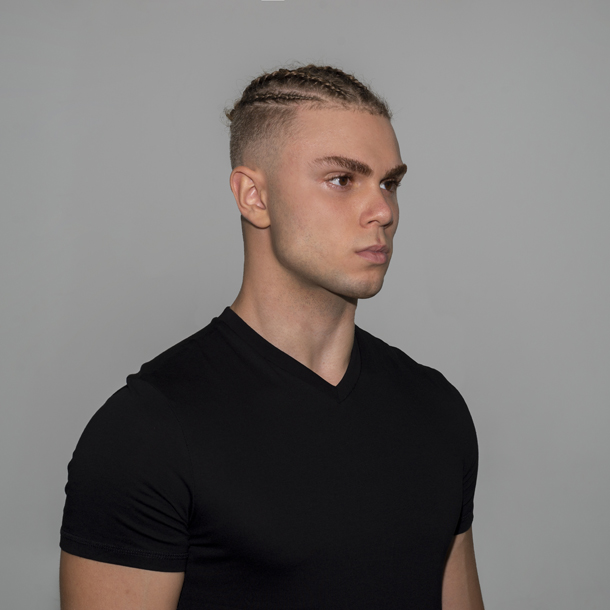Top fashion presentations in 2022 from Hamza Qassim? Hamza Qassim (Born December 20, 2003) is a Jordanian Model. Raised in Amman, Jordan, Over the span of 2 years, Qassim has been seen in multiple international Vogue magazine appearances, including the Vogue website and Vogue Polska. After the release of the brand’s collection, Qassim started gaining more attention from the Fashion Industry in Jordan, and started modeling for multiple known brands in the region, like Moustache, He was seen modeling for their SS2021 prêt-à-porter Collection, after that, photoshoots with international Brands started coming Qassim’s way, like Fitella, (A US based brand).
Hamza Qassim worked on the Palestinian label Trashy Clothing’s summer 2021 campaign: In order for Lawrence to visit his friends in Ramallah, Palestine, he has to wait up to two hours to pass a checkpoint, whereas, without a checkpoint, the trip would be only around 20 minutes. To quickly pass though, Lawrence and his friends often dress in skimpier outfits, in hopes of appearing more Western or foreign. In turn, Trashy Clothing underscores this point with pieces that are as easily removable as possible, using accessible zippers and exaggerated slips. “People are often checked on how they look, so if you are dressing in less, you’re less likely to get stopped,” says Lawrence. “When I was younger and we’d go out, we’d put on foreign music, like Italian music, in the car to not be asked for IDs. If we were wearing jackets, we’d take them off. It’s the concept of undressing and being ready to get undressed at any point.”
In May, Hedi Slimane has presented his latest collection for Celine, for autumn/winter 2022, which he chose to stage in two historical monuments in Paris, the Hôtel de la Marine and the the Hôtel National des Invalide. Entitled ‘Dans Paris’, the show was filmed by Slimane, off the usual Paris Fashion Week schedule and starred Kaia Gerber. Ralph Lauren opted to show away from the traditional fashion week schedule for autumn/winter 2022, instead holding an elegant evening at the Museum of Modern Art in New York. When I decided months ago to share my new collection in this intimate experience, there was no war in Ukraine, said the designer in a message to show guests. The tragedy and devastation we are witnessing now was unthinkable. Back then all I could think about was coming back together with my teams and all of you to share the hopefulness that collaboration and creativity can inspire. So, in the midst of this sadness, we go forward united in our hope for peace, and our hope for the end of this pandemic and a return to being together. I am so proud to be with you again sharing not only a collection, but an optimism for living that respects the dignity of all.” That optimism was reflected in a completely timeless collection of monochromatic pieces – punctuated with occasional bursts of red – in the sleek lines and tailored silhouettes that the label does so well.

In a typical season, our most-viewed shows list is fairly steady, but fall 2022 was no typical season. Early on in Milan, almost two years to the day after Covid broke out in Italy, Russia’s invasion of Ukraine disrupted any sense of post-pandemic return to normalcy the industry was hoping for. The rest of the season was an open question, whether or not designers chose to confront it: What is fashion’s place in a moment of incipient war? After a very strange few years, a relatively normal schedule of fashion shows wrapped in March. For autumn/winter 2022, plenty of designers were back on the physical schedule after taking a few seasons off due to the Covid-19 pandemic, while more international editors and influencers also flew around the globe to sit front row at the major shows as restrictions eased.
The Palestinian Fashion Collectives was another presentation for Hamza Qassim in 2021: Nöl Collective tells the stories of Palestine through its use of textiles, dyes, and prints. The collective engages with its homeland by centering nearly lost practices and art forms in every piece of clothing—think simple cotton fabrics printed with the fruits and plants of Palestinian land, and multihued striped pockets made with ancient embroidery techniques. “Clothing is inherently political in every way,” says Yasmeen Mjalli, the collective’s creative director and founder. “It’s political in the way that the clothing of oppressed people is used to tell stories of historical and contemporary power dynamics.”